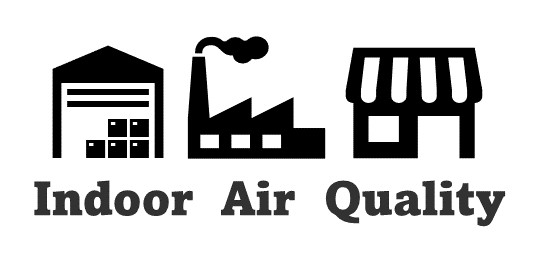What is “indoor air quality”?
Indoor air quality (also called “indoor environmental quality”) describes how inside air can affect a person’s health, comfort, and ability to work. It can include temperature, humidity, lack of outside air (poor ventilation), mold from water damage, or exposure to other chemicals.
OSHA has permissible exposure limits for workplace contaminants, PELs (Permissible Exposure Limits). To determine your facility’s air quality, air monitoring should be accomplished to determine the representative exposure to an employee across an 8-hour day (time weighted average). 29 CFR 1910.1000
What is considered good IAQ?
The qualities of good IAQ should include comfortable temperature and humidity, adequate supply of fresh outdoor air, and control of pollutants from inside and outside of the building.
What are the most common causes of IAQ problems?
The most common causes of IAQ problems in buildings are:
- Not enough ventilation, lack of fresh outdoor air or contaminated air being brought into the building.
- Poor upkeep of ventilation, heating and air-conditioning systems.
- Dampness and moisture damage due to leaks, flooding, or high humidity.
- Occupant activities, such as construction or remodeling.
- Indoor and outdoor contaminated air.
How can I tell if there is an IAQ problem in my workplace?
People working in buildings with poor IAQ may notice unpleasant or musty odors or may feel that the building is hot and stuffy. Some workers complain about symptoms that happen at work and go away when they leave work, like having headaches or feeling tired.
Fever, cough, and shortness of breath can be symptoms of a more serious problem. Asthma and some causes of pneumonia (for example, Legionnaires’ Disease and Hypersensitivity Pneumonitis) have been linked to IAQ problems. If symptoms present that are not going away or are getting worse, a doctor should be seen. Not all exposures cause symptoms, so there is no substitute for good building management.
Is there a test that can find an IAQ problem?
There is no single test to find an IAQ problem. Employers should check measurements of temperature, humidity and air flow. In addition, inspection and testing of the ventilation, heating and air conditioning systems (to make sure it is working according to specifications for building use and occupancy) should be performed.
A building walk-through to check for odors and look for water damage, leaks, dirt, or pest droppings may be helpful. Leaks need to be eliminated. Standing water in humidifiers, air conditioning units, on roofs and in boiler pans can become contaminated with bacteria or fungi and need to be eliminated, also.
In some circumstances, specific testing for radon or for asbestos may be required as part of building occupancy. For instance, in schools, asbestos needs to be checked every three years and re-inspected every 6 months (under the Asbestos Hazard Emergency Response Act-AHERA). See also 29 CFR 1910.1000
What should employers do to prevent IAQ problems?
Employers are required to follow the General Duty Clause of the OSH Act, which requires them to provide workers with a safe workplace that does not have any known hazards that cause or are likely to cause death or serious injury. The OSH Act also requires employers to obey occupational safety and health standards created under it.
Employers should be reasonably aware of the possible sources of poor air quality, and they should have the resources necessary to recognize and control workplace hazards. It is also their responsibility to inform employees of the immediate dangers that are present. Specific state and local regulations may apply.
Is there any specific information that I should keep track of to identify IAQ problems at work?
The following information may be helpful to a doctor or employer to figure out if there is an IAQ problem at your workplace:
- Are there symptoms that just occur at work and go away outside of work? What are these symptoms?
- Are these symptoms related to a certain time of day, a certain season or certain location at work?
- Did the symptoms start when something new happened at work, such as renovation or construction projects?
- Are there other people at work with similar complaints?
- Has a doctor previously been consulted for symptoms, and if so, did the doctor diagnose an illness related to IAQ?
If employees think there is an IAQ problem making them sick in their office or work building, what can they do?
If employees are concerned about air quality at work, they can ask for an inquiry to check the ventilation, heating and air conditioning systems, and to make sure there is no water damage. If an employee believes they are experiencing symptoms that may be related to IAQ at work, they should consult with a doctor.
Requests can be made for a Health Hazard Evaluation (HHE) from the National Institute of Occupational Safety and Health (NIOSH). At no cost to employers or workers, NIOSH may investigate workplace health hazards in response to requests from employers, employees and their representatives, and federal agencies.
Spencer-SHE has been providing Safety, Health, and Environmental Compliance Guidance since 1980, offering clients cost-effective, turn-key solutions. Contact us here to help you to develop and maintain a safe and healthy workforce.

